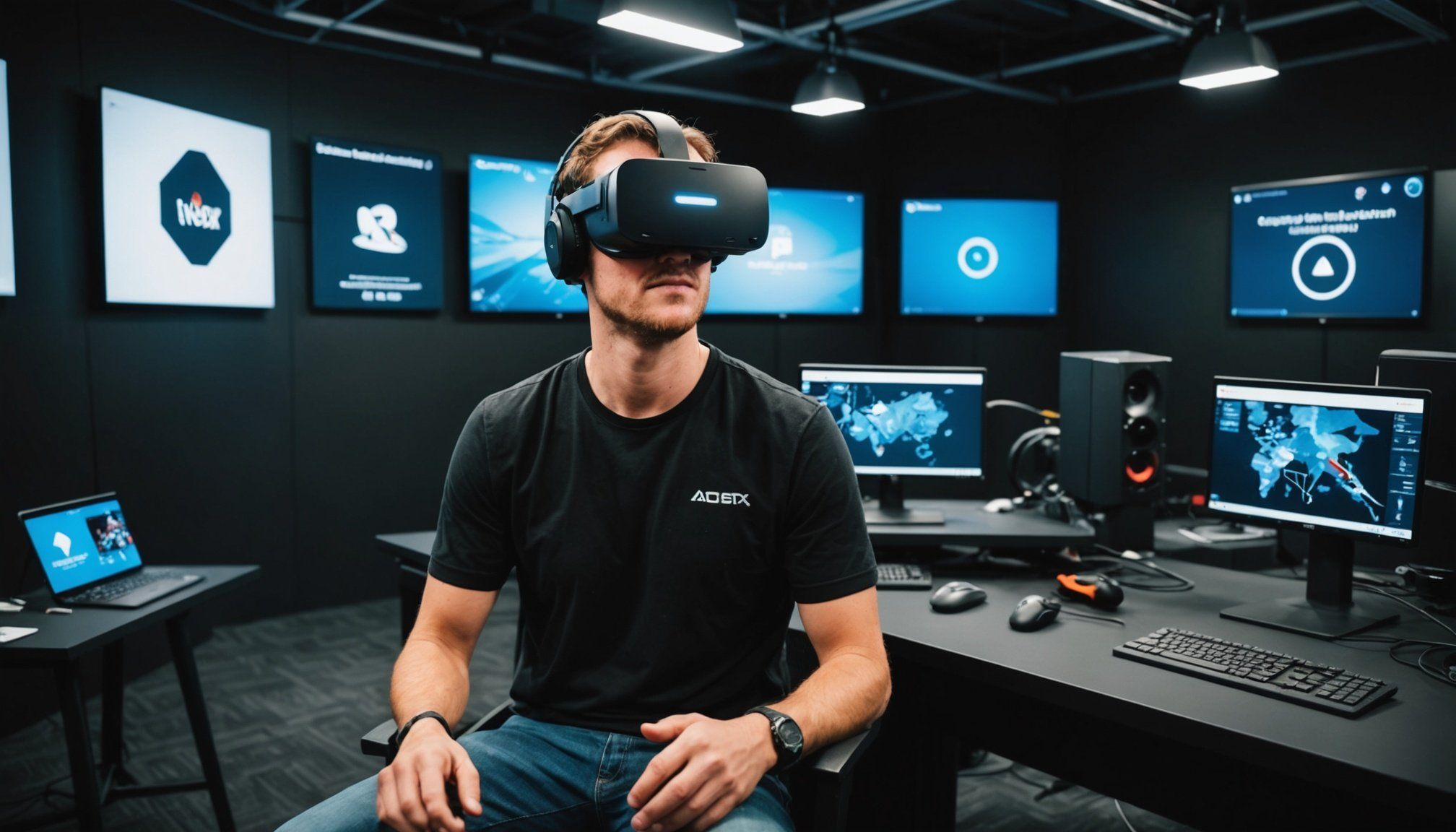Understanding the Unique Challenges of Hybrid VR and AR Game Development
Hybrid VR and AR technologies offer a realm of possibilities but come with unique challenges in game development. Developers often face technical obstacles like achieving seamless integration between virtual and real-world elements. This can require advanced skills in game development to ensure a fluid experience within a single platform.
The design complexities of immersive environments further add to the difficulty, demanding a focus on user engagement. Developers must craft intuitive interactions that blend VR’s immersive potential with AR’s real-world context. This hybrid approach requires balancing technical precision and creative design, overcoming issues such as latency and tracking accuracy.
In parallel : Mastering City Simulation: Proven Strategies to Generate Realistic Urban Traffic in Simulation Games
Common technical challenges include optimizing hardware to handle computationally intensive tasks and developing effective load management strategies. Additionally, creating changeable environments that transition smoothly between VR and AR is vital in offering a cohesive user experience.
Through overcoming these hurdles, game developers can unlock innovative gameplay possibilities that enhance player immersion and interaction, setting a solid foundation for future technological advancements.
Additional reading : Mastering Real-Time Voice Modulation: Key Strategies for Effortless Communication in Multiplayer Gaming
Technical Solutions for Development Hurdles
Hardware Requirements and Compatibility
With the rise of hybrid VR and AR, understanding VR development tools and AR frameworks is essential for game developers. Meeting hardware specifications can be challenging but is crucial for seamless performance. Developers need to ensure compatibility across different devices to deliver a consistent user experience. Consideration of factors, such as processing power and compatibility, ensures smooth operation within immersive environments.
Software Tools and Platforms
Choosing the right software platforms and tools is another critical step in overcoming development barriers. These tools can streamline the process, offering pre-built technical solutions that facilitate creating complex virtual realities. Platforms provide essential libraries and SDKs that incorporate best practices and efficiency for optimisation during development stages.
Middleware Solutions
Middleware serves as a vital component in bridging the gap between hardware and software, enhancing overall performance. It can handle complex tasks like data management and real-time rendering, enabling developers to focus on creative aspects. Understanding middleware’s capabilities is fundamental to optimising processing and ensuring responsive gameplay in hybrid environments.
Harnessing these technological resources allows developers to tackle game development challenges effectively, ensuring both technical robustness and an engaging user experience in VR and AR projects.
Design Principles for Immersive Experiences
In crafting hybrid VR/AR environments, the adoption of robust game design principles is crucial for delivering compelling user experiences. Central to this approach is user-centered design, where every element is tailored to meet the needs and expectations of players. Incorporating intuitive interfaces enables immersive gameplay that feels natural and engaging.
To create an interface that resonates with users, it’s essential to balance realism with engaging gameplay mechanics. This involves fine-tuning interactive elements that merge seamlessly with both the virtual and augmented realities. Such design considerations enhance the sense of presence and maintain user engagement.
Engaging designs necessitate a focus on immediate user feedback and clear visual cues. This aids players in navigating hybrid environments and contributes to a more intuitive experience. At the heart of these designs is the principle of involving users throughout the development process, ensuring feedback is continuously integrated.
Ultimately, understanding and implementing these game design principles empower developers to construct truly immersive experiences, pushing the boundaries of what’s possible in VR and AR gaming. With these foundations, developers can create worlds where gameplay and interactivity coexist harmoniously.
Case Studies of Successful Hybrid VR and AR Games
Analysing proven examples of hybrid VR and AR games provides valuable insights into overcoming game development challenges. These case studies offer practical lessons, revealing how developers navigated both technical and design complexities.
Game 1: Analyzing Design and Technical Execution
In this instance, a focus on engineering precise AR environments alongside immersive VR worlds was key to success. Developers leveraged advanced tracking systems to minimise latency, ensuring fluid interactions. The design favoured a seamless hybrid environment where virtual and augmented elements coalesced effectively.
Game 2: Innovations in Gameplay Mechanics
Another successful title saw developers experimenting with novel gameplay mechanics. By dissecting different ways VR and AR could enrich user interaction, they created unique and adaptive gameplay scenarios. This approach highlighted the potential for hybrid technology to redefine traditional gaming experiences.
Game 3: User Engagement Strategies
The final case study centered around enhancing user engagement through tailored strategies. Utilising real-time analytics and continual player feedback, developers refined experiences to heighten accessibility and enjoyment. This allowed them to fine-tune their offerings and maintain player interest, achieving long-term retention.
Practical Tips for Developers
In exploring VR AR development, certain best practices can significantly enhance the project outcome. For optimising performance, developers should prioritise efficient coding and resource management, as these are central to maintaining high-quality game experiences. Ensuring comprehensive testing is also crucial, particularly in identifying performance bottlenecks that could impact the user experience.
Effective user testing can be accomplished through iterative feedback loops. By frequently soliciting user insights, developers gain valuable input, allowing them to refine and polish their projects. This feedback is instrumental in enhancing intuitive interfaces and ensuring immersive gameplay resonates with users.
Accessing resources for ongoing learning is another vital area for developers aiming to stay competitive. Engaging with online courses and developer forums can help in understanding the latest VR AR trends and incorporating them into their work. Collaborative platforms offer insights into emerging technologies, fostering continuous growth.
Development tips focusing on usability and technical excellence can drive innovation in VR and AR projects. By embracing these strategies, developers are well-positioned to create compelling and engaging experiences that captivate users and set benchmarks in the industry.
Insights from Industry Experts
Expert interviews in the field of VR/AR provide valuable insights into developing cutting-edge games. Seasoned developers share experiences on tackling challenges unique to this realm. These conversations often highlight key trends and *future technologies poised to reshape the landscape of gaming.
Industry insights reveal the pivotal role of adaptive gameplay mechanics, encouraging a shift towards more personalized experiences. Developers emphasize integrating feedback loops to keep pace with evolving VR AR trends.
For those emerging in the market, experts advise focusing on mastering fundamental game development skills and building a portfolio that showcases one’s ability to create immersive experiences.
Industry predictions suggest that augmented reality (AR) will increasingly intertwine with virtual reality (VR), creating more holistic gaming environments. As the technology advances, areas such as haptic feedback and AI-driven NPCs are expected to enhance interactions, blurring the lines between the virtual and real world.
Aspiring developers are encouraged to engage with the community, continually learning and adapting to stay ahead in one of the most exciting gaming frontiers.
Future Developments in VR and AR Gaming
The future of gaming in VR and AR holds promising emerging technologies poised to enhance user experiences beyond the current framework. As hardware capabilities steadily evolve, developers can expect significant enhancements in processing power and rendering capabilities. These technological advances pave the way for real-time photorealistic graphics and improved haptic feedback, making immersive environments more engaging and lifelike.
Furthermore, the landscape of game mechanics is expected to transform with deeper integration of AI and machine learning. These tools will enable adaptive gaming experiences that respond dynamically to individual player preferences and actions. Such innovations aim to provide an increasingly personalised and interactive experience, further blurring the lines between virtual constructs and reality.
The societal impact of VR and AR gaming continues to expand as these platforms foster new modes of social interaction. Multiplayer experiences in virtual spaces are anticipated to become more prevalent, encouraging collaborative and co-op gameplay that transcends geographical barriers. As these trends gain momentum, the social fabric of gaming communities is set to evolve, elevating the shared experience of immersive gameplay in ways never before possible.











